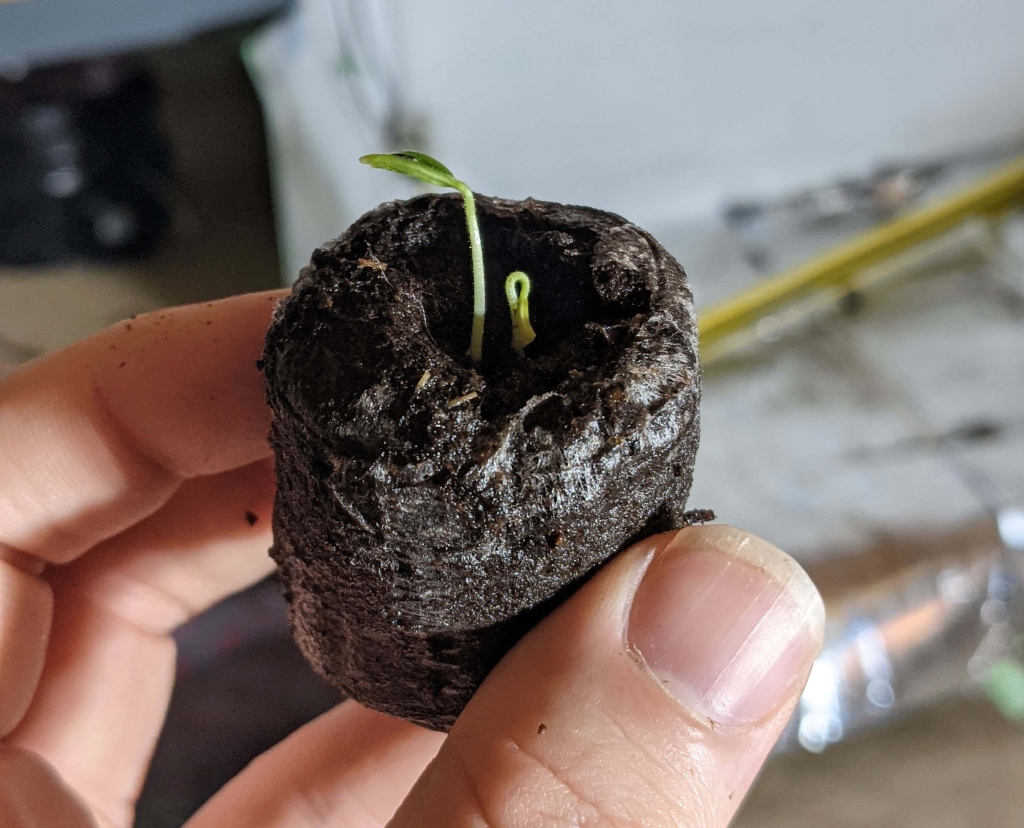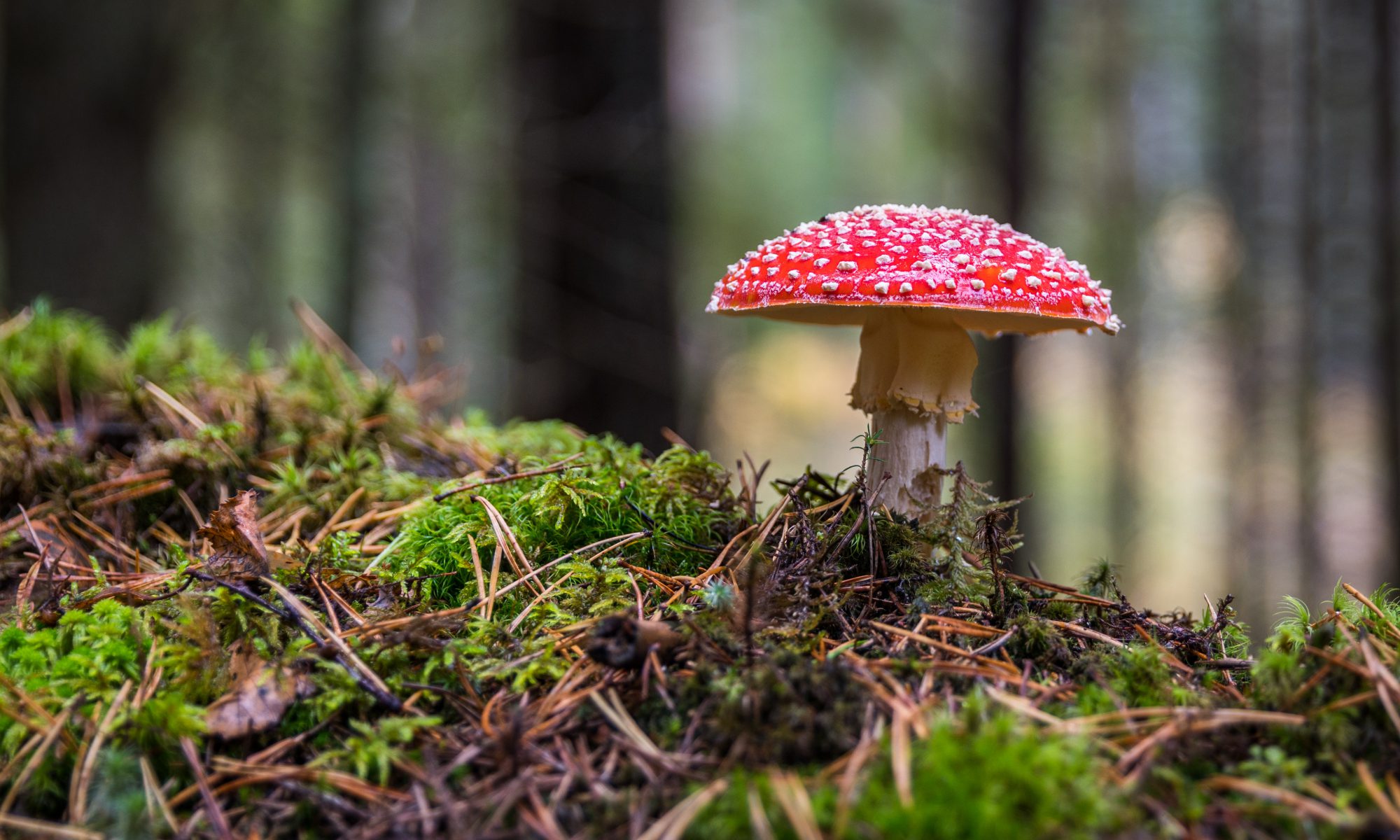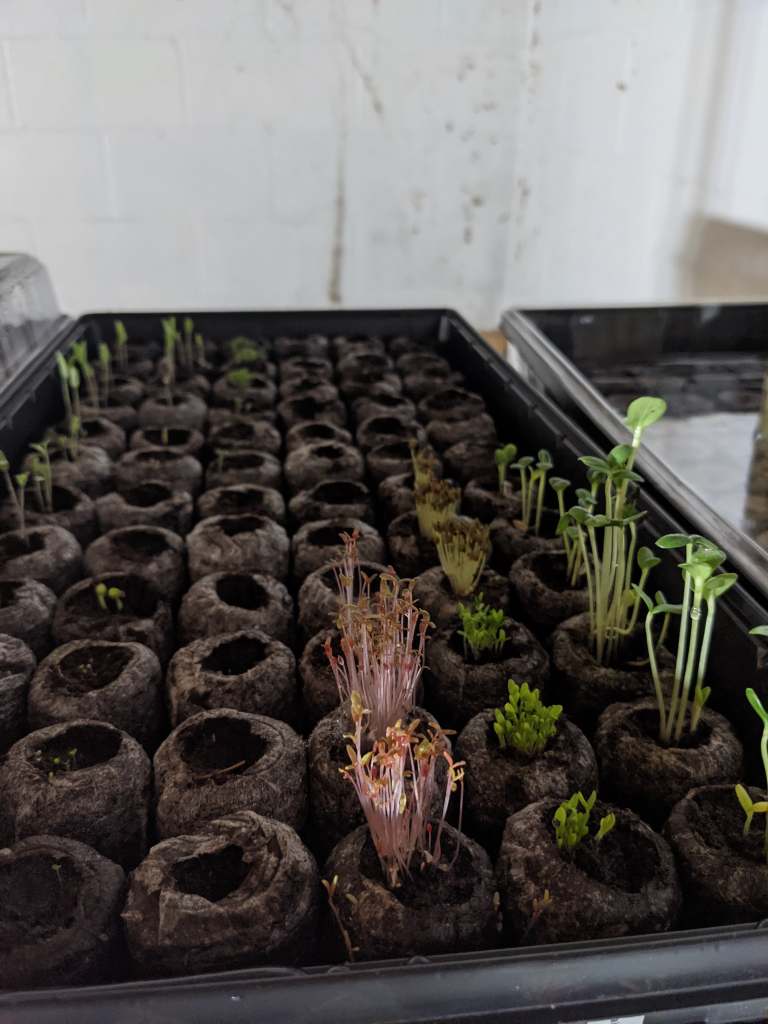I’m not going to lie, when we started this, I didn’t expect to do a daily seed update, but there’s been so much progress in such a short time that I feel like I have to share.
In the first image, you can see that the Zinnia, Amaranth, Dianthus, and Cockscomb continue to dominate in the seed starting olympics. They are growing so happily right now and I can’t wait to get them transplanted into bigger containers and maybe spread out the seedlings a bit. We’re also starting to see a few new starts making a showing though including a couple of Broadleaf Sage plants that you can see if you look closely in the left hand side of that first picture.
According to the Broadleaf Sage plant profile on Hoss, Broadleaf Sage is a perennial herb with mosquito-repelling properties that is a popular addition to many meat, egg and cheese dishes and works great to flavor savory foods like sausage, dressing or stuffing and homemade cheese. In addition to being mosquito-repellant, Sage is also very useful medicinally. Sage tea is often used to treat sore throats, coughs, and other inflammatory illnesses of the mouth and digestive tract. Sage has been used effectively for throat infections, dental abscesses, infected gums and mouth ulcers. Sage is also part of the Mint family (as are many herbs) so it is a carminative, meaning that it’s really useful in treating indigestion as well. These are only a few of Sage’s herbal properties, so if you want to know more, please check out Sage’s plant profile on HerbWisdom.com.
I’m especially excited that Broadleaf Sage is a perennial herb instead of an annual that you have to replant year over year or rely on self-sowing properties. I eventually want to grow a perennial food forest to get much of my produce from such as this amazing 23-year old Permaculture Food Forest which requires very little maintenance once it is established. I may not manage that on this property since I eventually would like to move abroad but an experience working with any perennials is welcome experience.
In the second image, you can see that the rest of our tomato varieties have started to sprout as well. Besides the Large Red Cherry Tomatoes and the Roma Tomatoes that I talked about in my last seed update, the other varieties that you see here are Hamson Tomatoes, Black Cherry Tomatoes, Brad’s Atomic Grape Tomatoes, and Blue Cream Berry Tomatoes.
Hamson Tomatoes are round, medium to large tomatoes developed by Dr. Hamson for the Campbell’s Soup Company. It is supposed to be resistant to disease and performs well, even in adverse climate conditions. They are sweet and have a low-acidic flavor, making them great for canning.
The Black Cherry Tomatoes are another part of our “goth garden” plants, producing small, dark fruits with a sweet and rich flavor. Despite their darker appearance, you can use them for salads, canning, or in any other way that you’d use regular cherry tomatoes. Their flavor is supposed to be somewhat different, however, so definitely taste one before cooking with it. Some people have said that they are very bland while some people say they burst with flavor or sweetness, so your mileage may vary. To learn more about growing Black Cherry Tomatoes, check out Gardening Channel’s article on How to Grow the Flavorful Black Cherry Tomato.
Brad’s Atomic Grape Tomatoes have wild looking, multi-colored fruit, having lavender and purple stripes, turning to technicolor olive-green, red, and brown/blue stripes when fully ripe. I’m really excited for these based on that alone. The fruit is supposed to be crack-resistant and extraordinarily sweet.
Blue Cream Cherry Tomatoes are another colorful variety of cherry-sized tomatoes. The fruits are supposed to be super sweet and cream-colored with purple splashes when fully ripe. Some people have said that their unique color make it hard to tell when they are ripe and some people say that the fruit has very thin skin, so it’s easy for them to split when harvesting or after rain.
In the last photo above, you can see that our vegetable tray is finally starting to take off as well. It’s hard to see what all is popping up, but here I’ve pulled out the tallest seedling in that tray which is a Murosaki Purple Pepper plant.

Murosaki Purple Peppers are an old variety of pepper from the Nara Prefecture of Japan. The fruits are supposed to be thin and purplish-black and look deceptively like a hot pepper while being totally heatless. This is another plant chosen primarily for its appearance as part of the “goth garden” aesthetic but I’m excited to be able to use these heatless peppers in my cooking since Ashe tends to prefer less spicy dishes but I still like to use a lot of peppers in my cooking. Bell peppers are fine, and we use them often, but I’m excited to have some different varieties to use.





That’s a great start on plants! Before too long, you’ll have more than you know what to do with. My tomatoes were the same way – all of a sudden, 24 seedlings in the same day.
If you want another unusually-colored plant to fit the aesthetic, try looking at Bloodleaf – the whole plant is purple-red, and it can be used for food coloring.
Which seedling are you most excited to get put in the ground?
Thanks! If I end up with more than I can use, I’m hoping to give some starter plants to my friends who don’t have the luxury of seed starting space.
As for which seedling I’m most excited to get in the ground, gosh that’s a great question! I have no idea. Maybe the amaranth? I’ve never grown most of these plants before, so I’m kind of excited to see them all.
Looks like you are off to a great start. That’s quite a rainbow of tomato colors! Best of luck and happy growing.
Thanks so much!